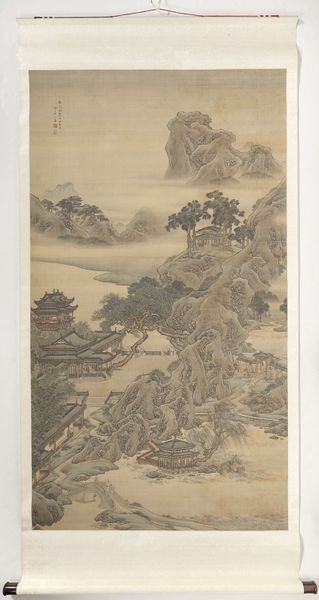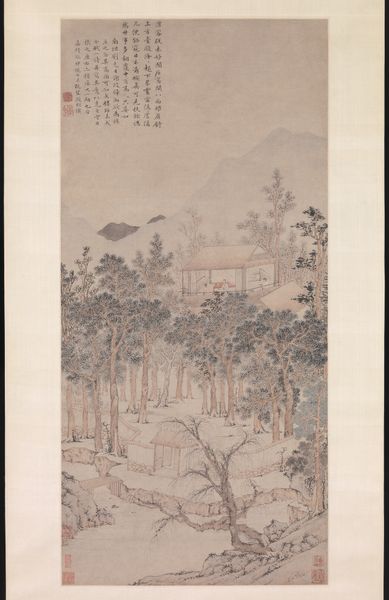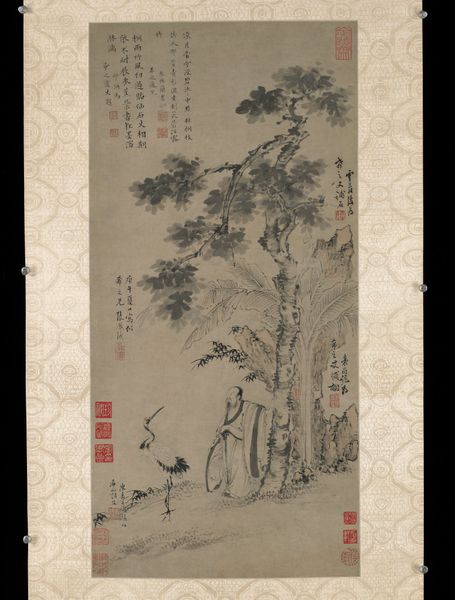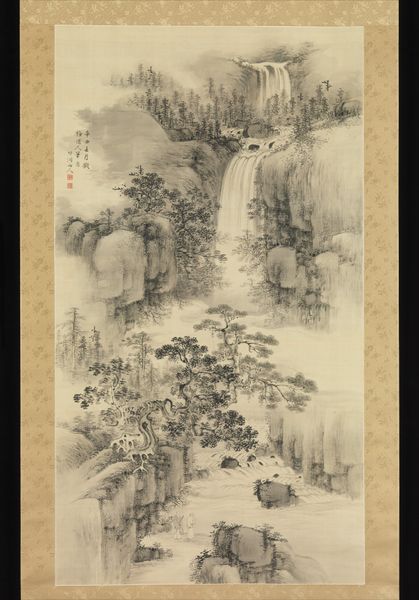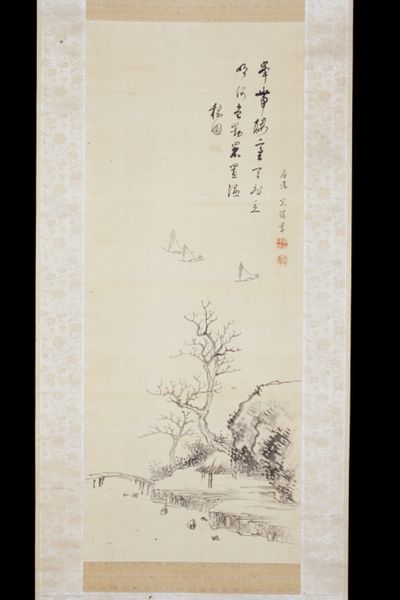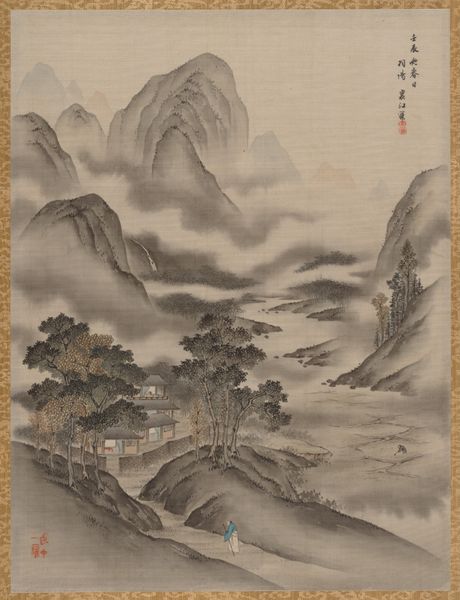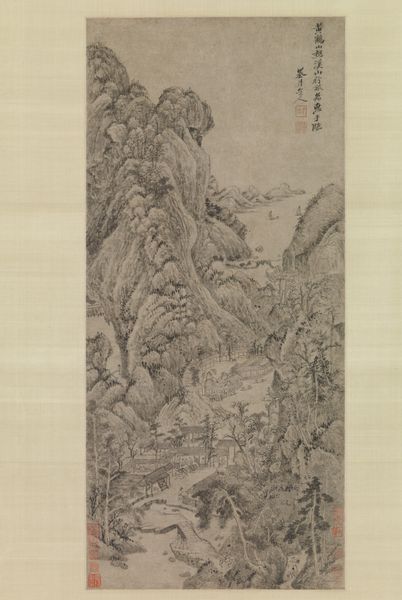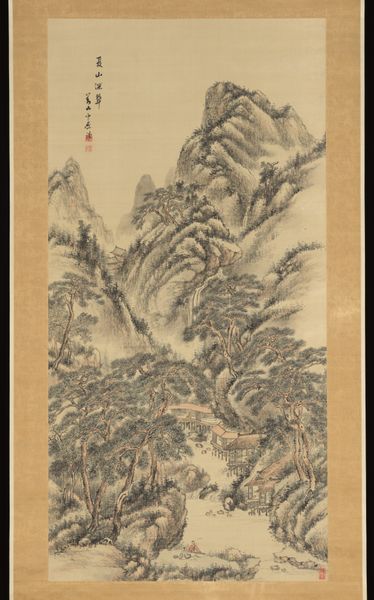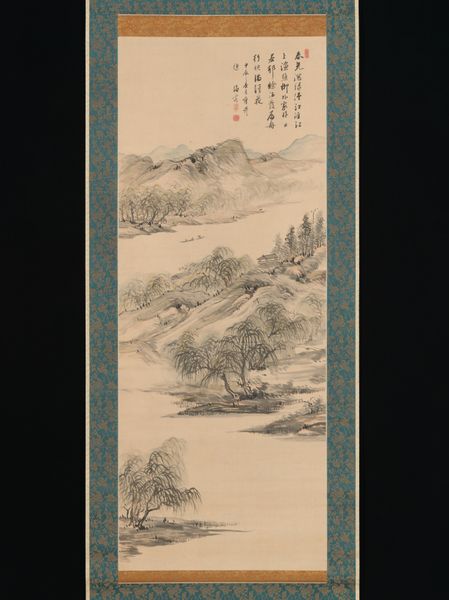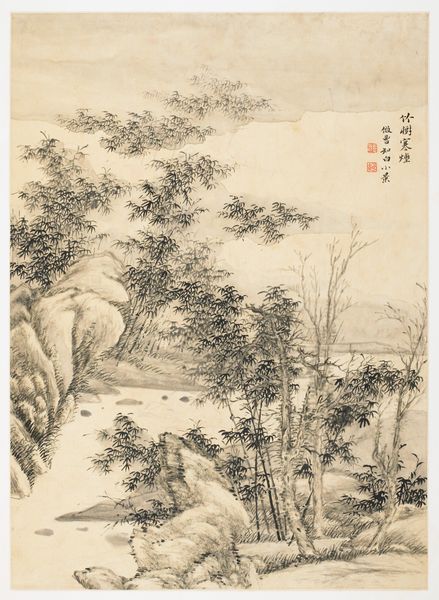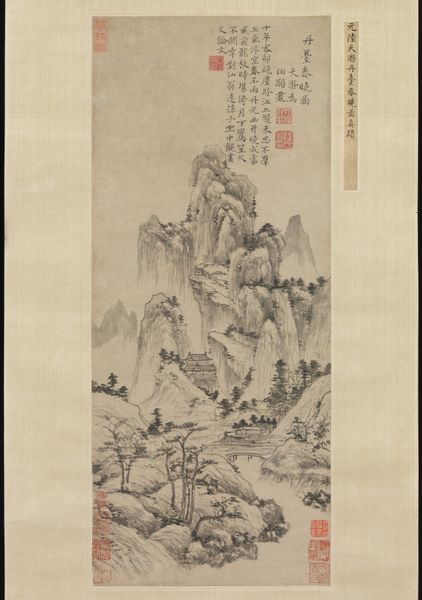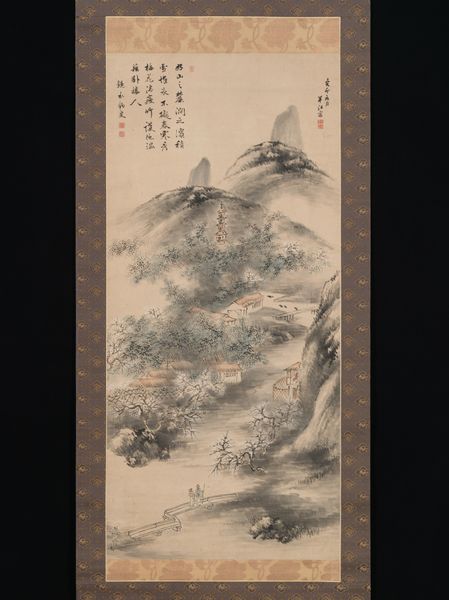
Dimensions: height 74.0 cm, width 39.9 cm, width 535 mm, diameter 50 mm, height 8 cm, width 57.5 cm, depth 27.5 cm
Copyright: Rijks Museum: Open Domain
Editor: So, this is a hanging scroll, "Rolschildering in de stijl van de vier Wangs," dating back to 1897, created using ink and watercolor. It's incredibly detailed and atmospheric. What strikes me is the emphasis on the landscape, but I am curious about its creation and impact. What stands out to you when you look at this piece? Curator: What I see is an intriguing interplay between artistic tradition and the means of its reproduction. This scroll claims to be 'in the style of the Four Wangs,' emulating their techniques and aesthetic, but done in 1897. What does that tell us about the market, the desire for these landscapes, and the labor involved in essentially replicating a revered style? The materials, ink and watercolor, become tools for participating in this cultural economy. Editor: So, it's less about the specific landscape depicted, and more about the act of creating art within an established framework? Curator: Precisely. Think about the physical labor required to produce something like this in 1897 – grinding pigments, preparing the paper, mastering brushstrokes. Each action is rooted in a specific social and material reality. What purpose did these reproduced ‘historic’ paintings play in the culture of the late 19th century? How was painting becoming a commodity through workshops and skilled laborers? Editor: That’s fascinating. It shifts the focus from artistic genius to a question of production and cultural consumption. This prompts me to see the work as a statement about art making as an industrialized process, but using historically accurate craft. Curator: Absolutely, and that's precisely what a materialist perspective encourages us to consider. It's about unpacking the social relations embedded in the very act of creation, rather than simply admiring the finished product. The act of "Rolschildering" in this way elevates "the style" beyond individual genius, making "the style" a kind of brand name in itself. Editor: That completely changes my perspective. I will think more about the circumstances in which a painting was created! Curator: And that helps us to truly understand art’s value. Thanks!
Comments
No comments
Be the first to comment and join the conversation on the ultimate creative platform.

